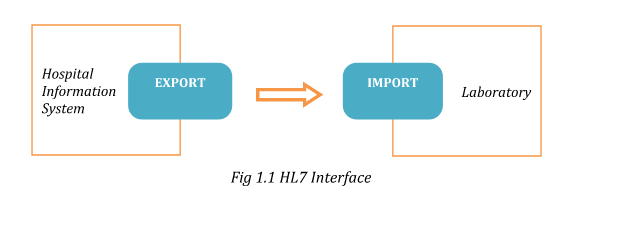In the current healthcare landscape, hospitals are confronted with the question of connecting their disparate systems to EHR since they use multiple devices and software applications from various vendors. What remains as a challenge is integrating several HL7 enabled devices and software applications with other data exchange devices. The only way to break the chain is using an interface that reduces data entry time, provides more control, optimizes data and efficiently establishes revenue objectives.
Organizations can normally adopt either of these interfaces to set up strategies to create and assist in communication between enabled applications. First is a point-to-point interface where applications communicate independently of other applications. Second is an interface engine which is typically the HL7 integration engine that aids, exchanges and monitors information between all applications. An HL7 integration engine would include an export endpoint for sending the application, an import endpoint for receiving the application and a way to move the data between the two end points.
A healthcare organization can choose to build a HL7 interface by either using a point-to-point communication or an HL7 integration engine. The point-to-point model is extremely expensive, time consuming and requires further monitoring and maintenance. Whereas, the HL7 integration engine model is less expensive, uses low amount of time and allows centralized monitoring making it more flexible.
There are far more advantages for an interface engine approach than the point-to-point approach. One of them is that the interface engine reduces the dependency on different vendors to make changes in the standard format. Let’s take a look at few more benefits of HL7 integration:
- Leverages on import or export module
- Distributes interfaces productively to multiple applications
- Improves physician and client support using proactive interfacing, messaging and monitoring log management
- Allows flexibility to adapt to various HL7 messaging standards, data format specifications or XML healthcare standards.
- Reduces the overall cost by re-purposing and adapting to multiple applications
Applications of HL7 integration
Simple Communications
HL7 integration engine is designed in a manner that it simplifies connecting, monitoring, sharing and maintaining the data between various interfaces. It can use data from the time an application is sent, filter it or change the design of the data to match individual communication needs. This is a unique feature that can greatly reduce the amount of individual endpoints that are required to communicate. Since the time to correspond between applications is reduced, there is a radical decrease in the price of executing an integrated system.
Effortless Reinstating
In an HL7 engine model, the messages flow through the interface making the complete process of adding, changing or replacing much easier and simpler. The HL7 integration engine covers other applications from numerous of the changes and only the endpoints need to be created to reinstate the replaced application are the export and import endpoints. The interface can use identical data it is already receiving and send it to the new application.
Quality Monitoring
It is easier to monitor all connections using the interface engine as this is usually done from a centralized location. This helps to immediately view the situation of the connections, review these details and create appropriate alerts when a problem arises. The interface engine can notify when a connection stops allowing the team to act and respond on it as quickly as possible. The HL7 integration engine is also capable of providing information regarding each connection in detail. This includes elements such as the time the connection has been idle for, the amount of messages processed and the number of messages waiting for a connection to be processed.
Easy Logging
Usually, you can expect communication problems to take place at times and in such situations logging in is the only way to determine the cause of the problem. However, HL7 integration connects all applications and devices where you can easily access all the connection logs including messages sent and received alerts, errors, and connection states. Logging quickly and seamlessly helps track the flow of message in the system, which means, you will know exactly when it was sent, what it contained and whether it was received by the intended recipient.
Matt Wilson
Latest posts by Matt Wilson (see all)
- 5 Benefits of EMR Integration - October 5, 2017
- Evaluating Hl7 Integration Approach - September 25, 2017
- Top Cloud Based Applications That are Changing Healthcare - July 21, 2017





